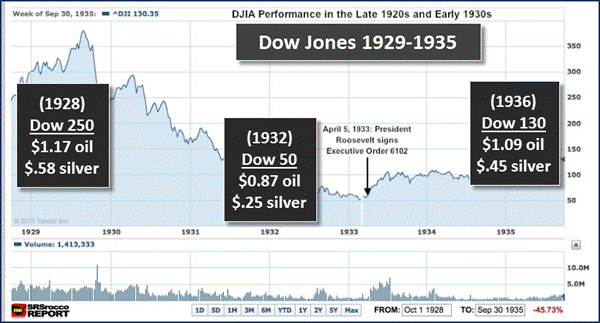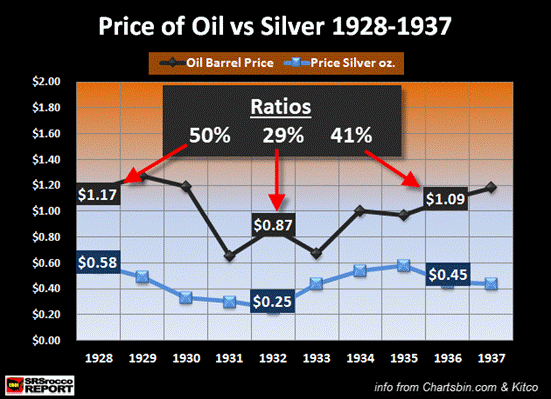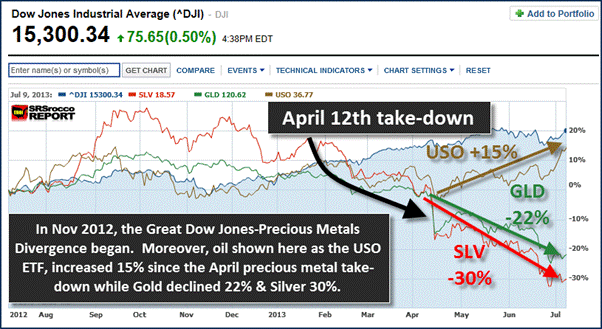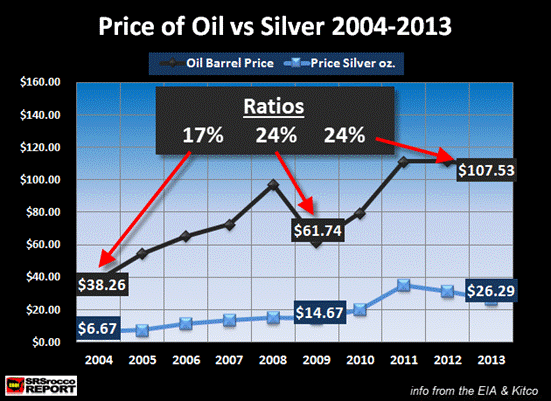As the FED turns up the heat in the central bank frying pan, the frogs (public) don’t realize they are being cooked to death by inflation. I am quite amazed how loud the sizzling sound has become, but for some odd reason hardly anyone notices it.
Unfortunately, we are well past the point of no return. It’s only a matter of time now before the whole “Financial Cliff” falls off the mountain side. Until then, gold and silver investors will have to put up with some of the worst analysis ever to come out of government and MSM.
You see this is quite amazing when we consider that just a few generations ago, gold and silver were the two most important monetary metals used in the economy. Gold’s strategic role was shown when Roosevelt confiscated the precious metal in 1933 and revalued it to supposedly save the economy.
However, any mention of the subject of gold today to any of the members at the Fed or U.S. Treasury during a public hearing, and you will hear a subtle laugh or snicker as they explain it’s just a traditional piece of metal taking up space in central bank vaults. Of course, down deep they believe the opposite, but when their job is cooking frogs for a living, the less the public knows… the better.
ENERGY: The Precious Metal Ally & Secret Weapon
While the Fed has been spending a great deal of time printing money, buying Treasuries and talking out of both sides of its mouth to keep the public’s faith placed firmly into the disintegrating fiat monetary system, the fundamental values of gold and silver just keep on baking in the oven.
Sure, both the paper price of gold and silver have tanked recently, but this is a temporary situation. The one fundamental force that the FED cannot manipulate in the future, is the “Store of Value” that is locked into each ounce of gold and silver.
Another way of calling the value stored in precious metals is its “Economic Energy”, coined by Mike Maloney which he describes in his video, “Hidden Secrets of Money: Money vs Currency.” I highly recommend the video because it simplifies the whole complex matter of money vs. fiat currency.
Furthermore, the video points out that we mistakenly label the Dollar as money, when in fact it should be correctly called as just a currency. Gold and silver are money because they function as a currency and as a store of value. A Federal Reserve Note does not have a store of value, unless you want to attribute a few cents to the high cost of its printing.
There is a reason why the rest of the world is buying gold hand-over-fist as the paper price continues to fall. Gold contains a certain amount of this “Economic Energy”, which I label as “Trade-Able Energy Value” that is based upon the energy that runs the overall economy.
Gold & Silver vs. A Barrel of Oil
One way to understand this “Economic Energy” is to see how the value of gold and silver relate to a barrel of oil. Most economists today, make future forecasts based on superficial data and information. For some strange reason, the energy equation seems to be missing from this analysis.
Many of these government economists believe all we have to do to “Increase Jobs” is to stimulate the economy. Do any of these economists ever consider whether or not there will be a growing energy supply in the future to support these increased jobs? Of course not. This is the biggest problem with status quo economists — making forecasts without including the all the tangential factors.
It seems as if the Ivy League Business Professors view the macro economy in the same way as an individual in the big city believes food comes from the refrigerator. The business schools focus on finance and monetary policy is incorrect… because,
ENERGY IS THE DRIVER OF THE ECONOMY, not finance
Finance is supposed to steer the economy on a healthy path, but due to the fact that this power is in the hands of the corrupt Central Bank Fiat Monetary Authorities, we are heading towards a chain reaction collision.
If we look at the chart below, we can see how the price of silver stacked up against oil and the Dow Jones Average at the time. In 1928, a barrel of oil cost $1.17 while silver was $0.58. As the brunt of the depression hit the U.S. economy in 1932, the price of oil declined to $0.87 and silver fell more than half to $0.25.

As conditions in the economy started to recover (supposedly), we can see both the price of silver and oil increased in 1936. This next chart takes the ratio of the price of silver compared to a barrel of oil during these same years.

In 1928, an ounce of silver (not its denominated coin value), was worth 50% compared to the price of a barrel of oil. By 1932 this declined to 29% and then rose back up to 41% by 1936. Keep in mind these ratios, as we will compare these to the present ratios a little later in the article.
What took place during this time was the typical textbook definition of deflation — a decline in the money supply. As economic activity decreased so did the money supply as well as the value of silver, oil and commodities.
Furthermore, in the first chart you will notice that as the Dow Jones average declined from 250 points in 1928 to 50 in 1932, the price of oil and silver declined along with it. Also, as the Dow Jones average rose up to 130 points in 1936, both the price of oil and silver increased as well.
Again, what occurred during the 1930’s depression was typical of a deflationary outcome in an economy that was based on sound money. Unfortunately, today, we have a much different animal.
This chart below shows how a fiat monetary system, controlled by central banks can totally distort values of the physical economy.

This chart compares the present Dow Jones average to the GLD, SLV and USO (oil ETF). The SLV is shown in RED, the GLD is in GREEN, and the USO oil ETF is in BROWN. After the QE3 announcement by the FED in Sept 2012, you will notice how all the indices increased with silver and gold outperforming both the Dow and the USO.
However, something changed at the beginning of Dec, 2012. The SLV and the GLD peaked and have continued to decline as of the date of this chart, July 9th. In contrast, the Dow Jones average is much higher by gaining 2,400 points or 19% in the same time period.
The huge divergence especially takes place after the April 12th take-down of both gold and silver. Here we can see that the USO, which was paralleling gold and silver’s move lower, abruptly disconnected and headed 15% higher since April 12th. On the other hand, the SLV was knocked down 30% and the GLD 22%.
Now, getting back to the silver-oil ratio, this next chart shows how much the buying power of silver in regards to oil has changed presently.

In 2004, the average price of silver was $6.67 which was 17% compared to the price of a barrel of oil ($38.26). As the world’s economies fell into a severe recession, the average price of oil declined from nearly $100 a barrel in 2008 to $61.74 in 2009. However, the price of silver declined much less in percentage terms from $14.99 in 2008 to $14.67 in 2009. Thus, the silver to oil ratio actually increased to 24% where it remains presently in 2013.



